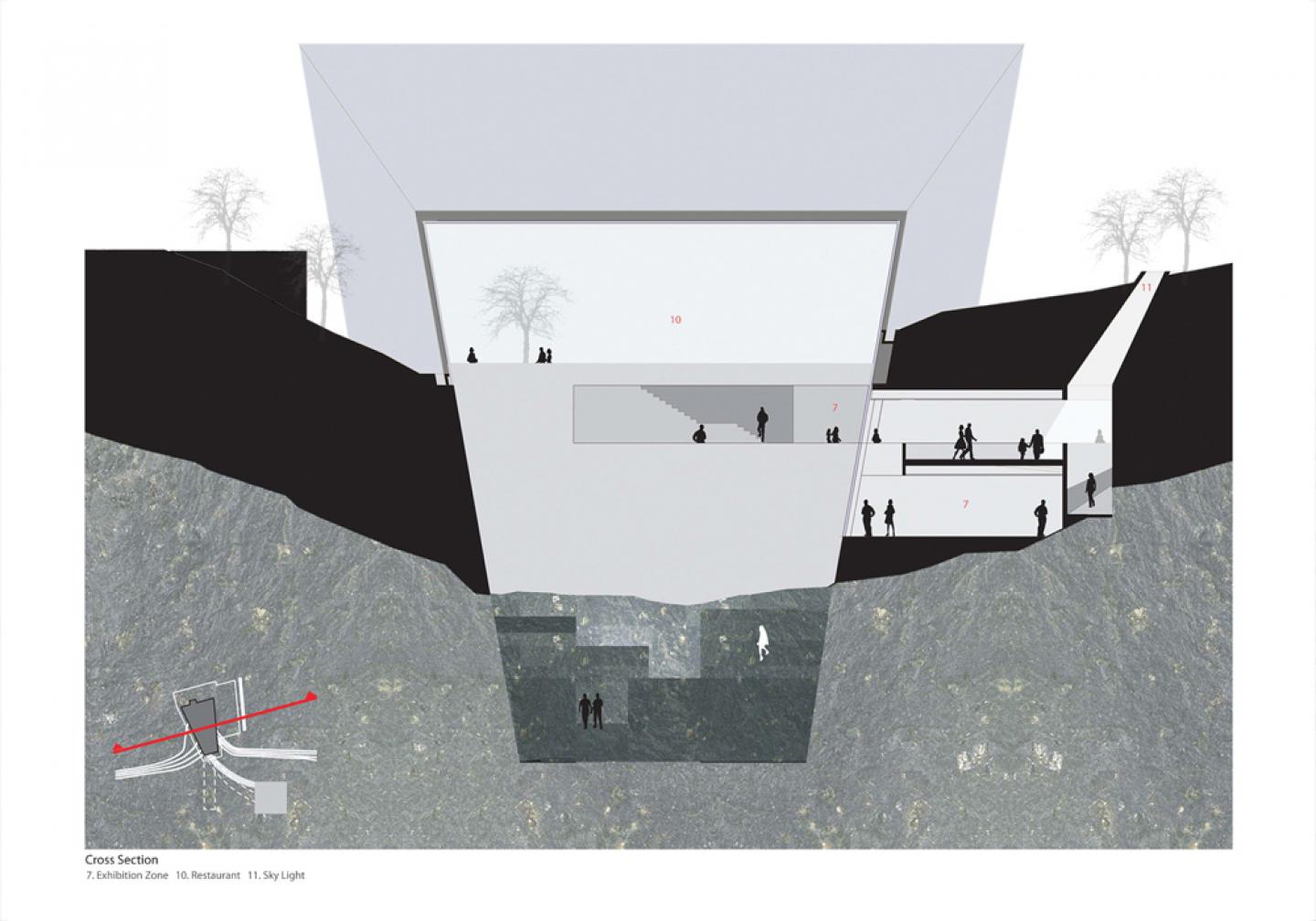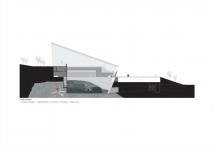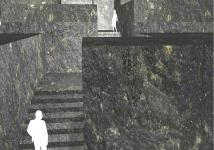Located very close to an archeological dig, the site is a large basalt deposit. The museum is embedded into the contour lines of the landscape sinking deep into the earth and metaphorically into the history of the site. The ceremonial open-air path is the primary generator of function and experience along which the museum is defined. At the primal point it detaches from the terrain and rises up appearing to float in the air, defying gravity. Furthermore, it forms a system of panoramic signposts facing the archeological plateau. Traversing different combinations of routes, the world of prehistoric existence can be explored in different modes and levels.
Navigation through the museum is key; visitors experience changing volume and light patterns as they climb upwards, ultimately seeing a panorama of barren yet compelling spread of landscape at the summit. Ceremonial navigation through space is a recurring theme, perhaps because it emulates the designer’s journey from conception to realization. The process of design is repeated in the progression through the built space.
The gorge or the bottom is the starting point of the journey and the other spaces are experienced through a sequence of suspended stairs and platforms as it expands into the horizon. The caves of the exhibit make a labyrinth that unfolds like a story at every turn. Through the recessed interspaces connecting different blocks one can view the stratified past - to experience a museum within a museum. Journey to the past thorough the translucent prism of the present will connect the visitor to what existed before, and also allow the appreciation of material, space and time.
2007







